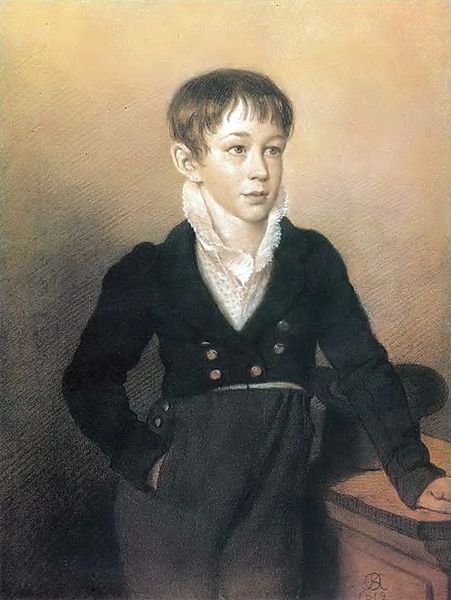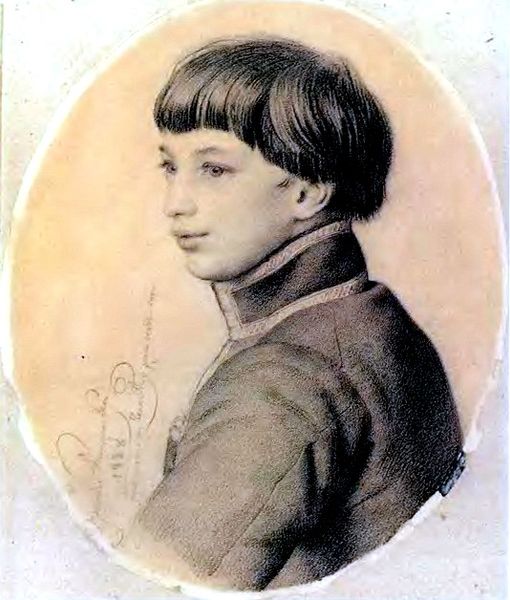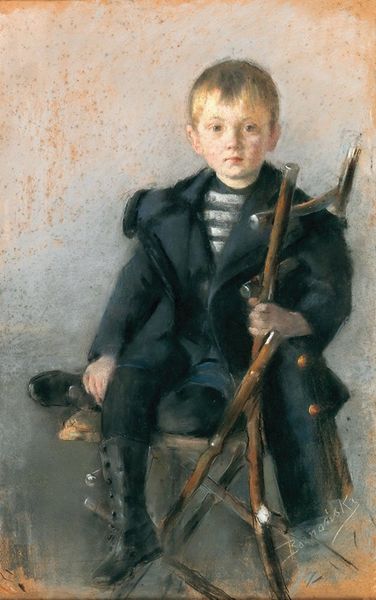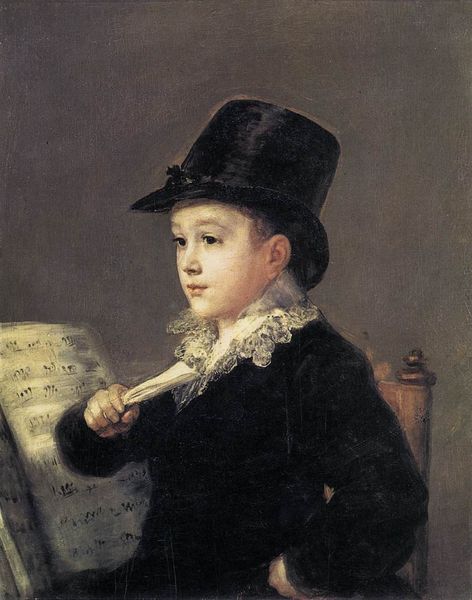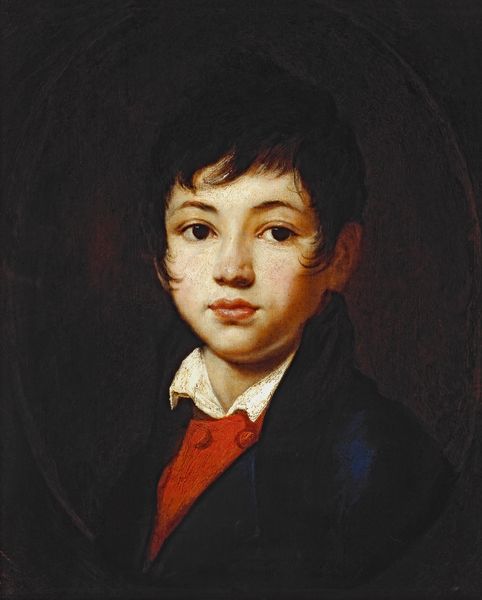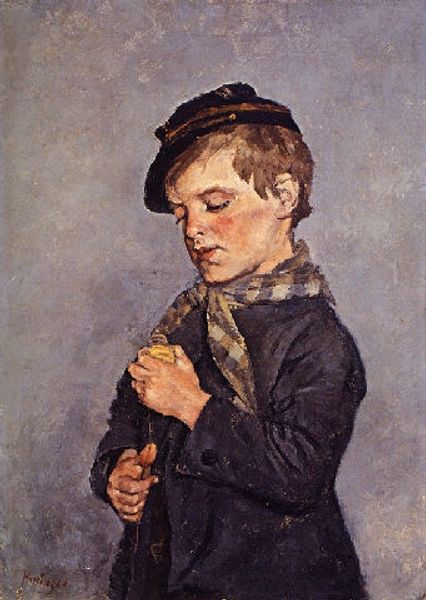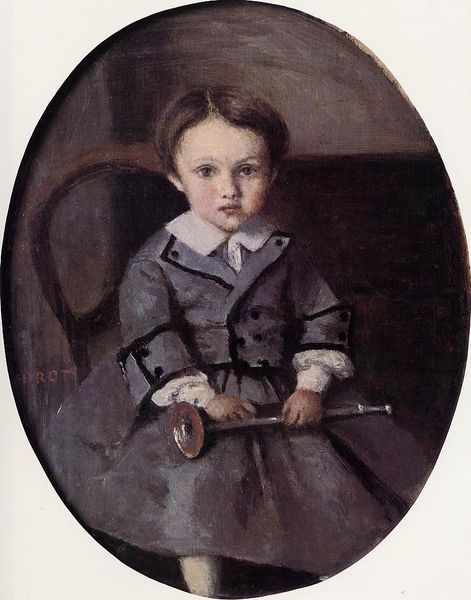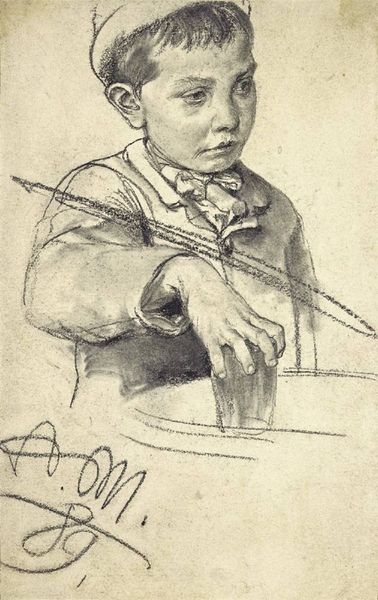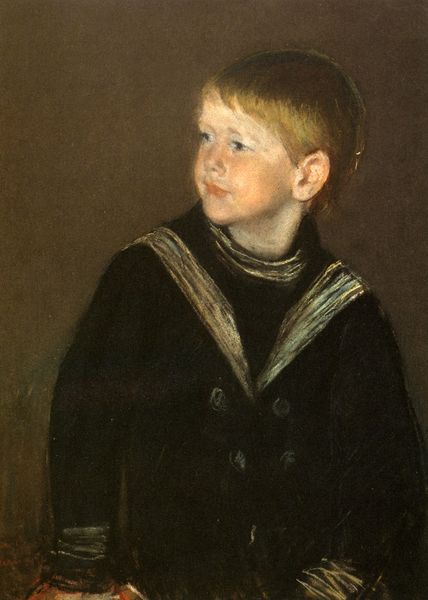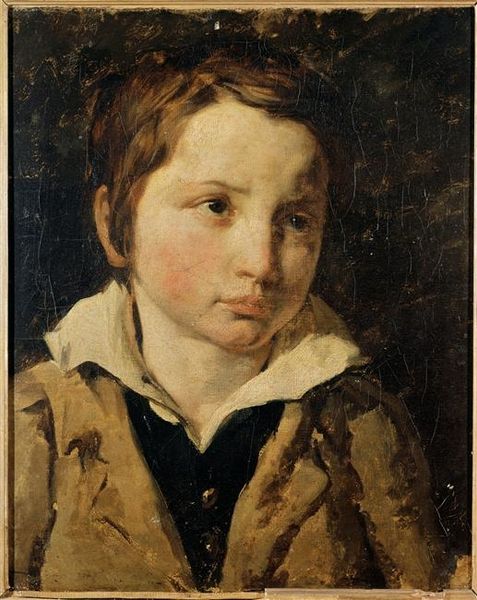
painting, oil-paint, impasto
#
portrait
#
painting
#
impressionism
#
oil-paint
#
impasto
#
genre-painting
#
modernism
Dimensions: 85 x 71 cm
Copyright: Public domain
Curator: Edouard Manet's “A young man peeling a pear,” painted around 1868, offers a slice-of-life genre scene rendered with a distinctly modern approach. What catches your eye first? Editor: The melancholy! It feels like the quiet before a storm, or the lingering aftermath of a forgotten sadness. The pear becomes a prop in his private theater. Curator: It’s a departure from traditional portraiture. The composition leads the eye less to the sitter’s face than his hands and the meticulously rendered pear itself. Consider how Manet’s impasto technique renders the luminosity of the fruit's skin. Editor: Right. The pear isn’t just a pear—it’s practically a character. I get a sense that the peel dropping to the table mirrors this young man, Leenhoff, shedding some outer layer, some youthful skin. A transformation of sorts? Curator: Possibly. Leon Leenhoff was the son of Suzanne Leenhoff, who later married Manet, and this painting resides intriguingly within a domestic context. Observe the restricted palette; earthy browns contrasted with the cool blues and greens of the table and fruit, enhancing this reflective mood you identified. Editor: The darkness that threatens to swallow the young man and his task suggests the passing of time or an elegy— the pear decays with each cut. Even his unfocused gaze has a transient quality, a symbol for an unfixed identity and impermanence. The rough brushstrokes only seem to further isolate this fellow. It’s brilliant! Curator: The seeming spontaneity is crucial; however, remember that it is a very carefully constructed effect. What is depicted is not raw experience but, rather, mediated, selected, refined, and translated onto the canvas with deliberation and craft. Editor: I’d agree. Looking at this seemingly simple scene now, knowing more, I appreciate the psychological density and wonder. Even a small act can speak volumes about where a person is in their own history. Curator: Indeed, it transforms an everyday action into a significant moment—pregnant with potential meaning for artist and viewer alike.
Comments
No comments
Be the first to comment and join the conversation on the ultimate creative platform.
